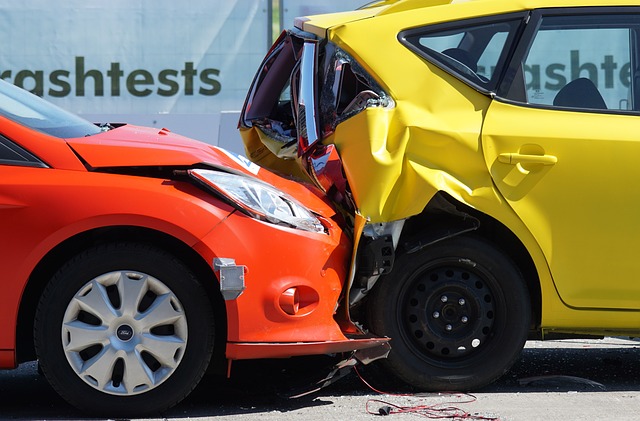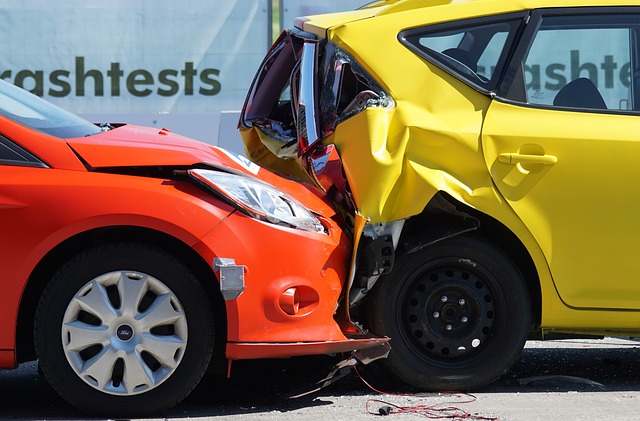Collision and comprehensive auto insurance offer distinct protections. Collision covers damages from vehicle crashes, while comprehensive shields against non-collision events like theft, vandalism, natural disasters, and animal damage. Collision policies focus on repair or replacement costs after an accident, whereas comprehensive policies require filing a claim with the insurer for assessment and payout based on policy terms. Drivers should consider their risk factors, budget, and specific needs when deciding between these types of insurance, balancing cost differences against expanded protection offered by comprehensive coverage.
Collision and comprehensive auto insurance are two essential coverage options, yet they offer distinct protections. This article delves into the differences between these policies, exploring key aspects such as coverage, claims processes, and scenarios where each excels. Understanding the nuances of collision versus comprehensive insurance helps drivers make informed choices to best protect their vehicles and themselves. Learn about policy payouts, premium costs, and crucial considerations for selecting the right auto insurance that aligns with your needs.
Understanding Collision Insurance: Coverage and Reimbursement

Collision insurance is a crucial component in auto ownership, offering financial protection against unforeseen incidents on the road. When you’re involved in a collision, whether it’s with another vehicle, a fixed object, or due to human error, this coverage steps in to help with the repair or replacement costs. Understanding the scope of collision insurance is essential when comparing it to comprehensive coverage.
Collision insurance typically covers repairs or replacements directly resulting from physical damage caused by a collision. This includes accidents involving other vehicles, such as fender benders or more severe impacts. It also may provide reimbursement for towing and rental car services if your vehicle becomes disabled during the claim process. However, it’s important to remember that collision coverage does not include protection for incidents unrelated to physical collisions, like theft, natural disasters, or vandalism—these are areas where comprehensive insurance takes over.
Comprehensive Insurance: What It Covers Beyond Accidents

Comprehensive insurance goes beyond covering accidents, offering protection for a wide range of unforeseen events that could impact your vehicle. Unlike collision insurance which primarily focuses on damages resulting from crashes, comprehensive coverage includes protection against theft, vandalism, natural disasters like storms or floods, and even damage caused by animals. This makes it an attractive option for drivers who live in areas prone to these risks.
When you opt for comprehensive auto insurance, you’re also securing yourself against other non-accident related incidents such as car theft recovery expenses, broken windows, or paint damage from birds. This type of coverage provides peace of mind, ensuring that unexpected events won’t leave you burdened with costly repairs or replacement costs.
Key Differences in Policy Payouts and Claims Process

When it comes to auto insurance, understanding the key differences between collision and comprehensive coverage is crucial for drivers looking to make informed decisions. These two types of policies serve distinct purposes and have unique payout structures and claims processes.
Collision insurance is designed to cover repairs or replacements in the event of a crash involving your vehicle. The claims process typically involves reporting the incident to your insurer, providing evidence, and then receiving a payout based on the cost of repairs or the current value of your vehicle, whichever is less. On the other hand, comprehensive insurance provides protection against a wider range of events beyond collisions, including theft, vandalism, natural disasters, and animal-related incidents. The claims process for comprehensive coverage usually involves filing a claim with your insurer, who will assess the damage, and then you receive a payout based on the policy terms and conditions.
Scenarios Where Each Type of Insurance Excelled

Collision Insurance Scenarios:
Collision insurance is designed to cover repairs or replacements when your vehicle collides with another car, object, or even a pedestrian. It excels in scenarios like rear-end collisions, sideswipes, or incidents where your vehicle is hit while parked. For instance, if you’re involved in a fender bender on a busy street, collision insurance will step in to pay for the damages, providing financial relief for repairs or, in some cases, total vehicle replacement.
Comprehensive Insurance Scenarios:
Comprehensive auto insurance, on the other hand, covers a broader range of events beyond collisions. It kicks in when your vehicle suffers damage from non-collision related incidents like theft, vandalism, natural disasters (e.g., storms, floods), or even animal damage. Imagine waking up to find your car vandalized with graffiti—comprehensive insurance would cover the cleanup and repair costs, offering peace of mind in unexpected situations. It’s a wise choice for those who want protection beyond the typical collision scenario.
Factors Influencing Premium Costs: Collision vs. Comprehensive

When comparing collision versus comprehensive auto insurance, understanding premium costs is crucial. Several factors influence these differences in pricing. One key distinction lies in the scope of coverage each policy offers. Collision insurance primarily covers damages arising from accidents, including repairs or replacements if your vehicle collides with another object or experiences damage due to impact. In contrast, comprehensive insurance provides broader protection, encompassing not just collisions but also theft, vandalism, natural disasters, and other unforeseen events.
The cost of collision vs. comprehensive insurance varies based on these coverage differences. Comprehensive policies tend to have higher premiums because they offer more extensive protection. Additionally, your vehicle’s make and model, driving history, claims frequency, and location all play significant roles in premium calculations. These factors contribute to the variations in pricing between collision and comprehensive auto insurance options.
Choosing the Right Policy: Considerations for Different Drivers

When selecting auto insurance, understanding the distinction between collision and comprehensive coverage is key for every driver. Both protect against financial loss, but they cater to different needs. Collision insurance covers repairs or replacement due to accidents involving your vehicle, including incidents with other cars, objects, or even stationary structures. It’s essential for drivers who frequently drive on busy roads or live in areas prone to accidents.
Comprehensive auto insurance, on the other hand, offers broader protection against non-accident related events. This includes coverage for theft, vandalism, natural disasters like floods or storms, and even animal-related incidents. Comprehensive policies are ideal for those valuing peace of mind, especially if they own expensive vehicles or drive in areas with higher crime rates. Balancing these options based on personal risk profiles ensures drivers get the most suitable protection under collision vs. comprehensive auto insurance.
